PhD Research Projects
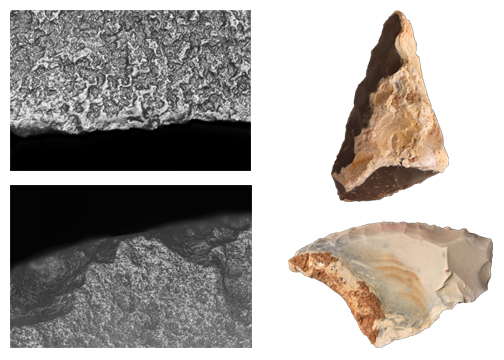
Understanding the Use of Flint Scrapers at Middle Pleistocene Qesem Cave (Israel), and its implications for the study of the Quina phenomenon in the Levant and beyond.
Andrea Zupancich
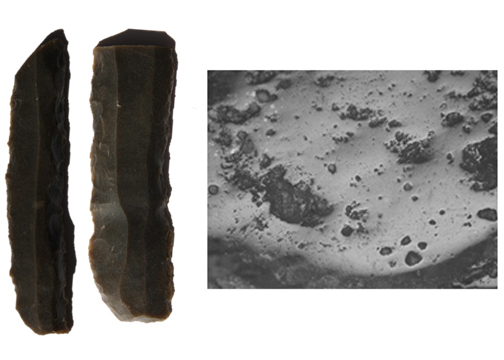
The Reconstruction of Social Changes though the Exploitation of Plant Resources at Arslantepe (Turkey) from the Late Calcholithic to the Early Bronze Age: a Use Wear Approach.
Davide D'Errico
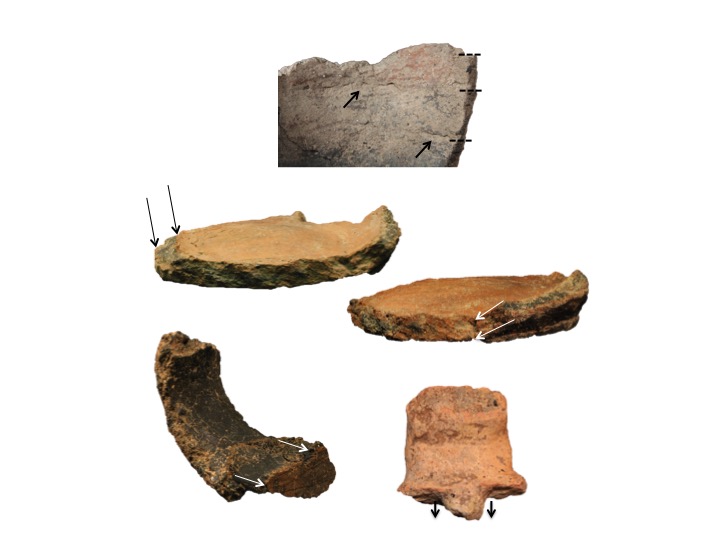
Technology and Function in the Copper Age Pottery Production of the Rome Area: case studies, issues and research potentials
Vanessa Forte
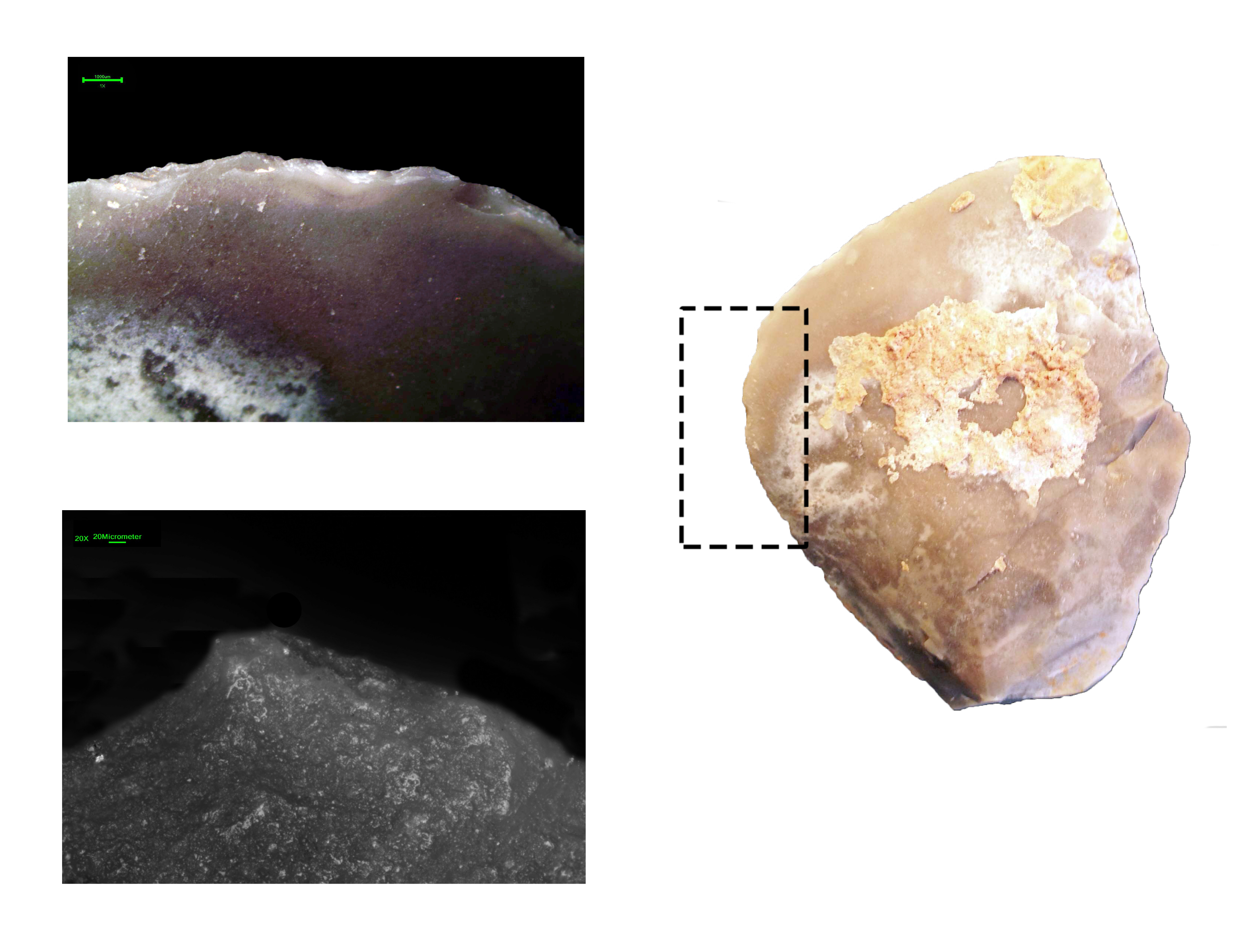
The Recycling Phenomenon during the Lower Palaeolithic: The case study of Qesem Cave (Israel)
Flavia Venditti
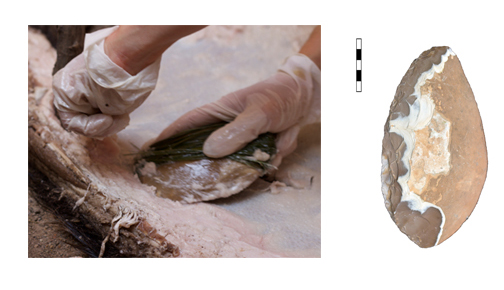
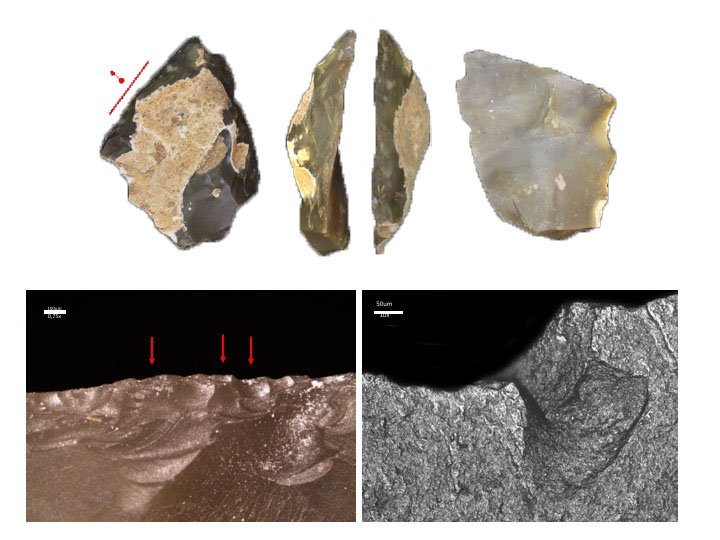

Reasercher Involved: Andrea Zupancich
Understanding the Use of Flint Scrapers at Middle Pleistocene Qesem Cave (Israel), and its implications for the study of the Quina phenomenon in the Levant and beyond.
Ongoing PhD Research at LTFAPA and Tel Aviv University
This project focuses on the analysis of both the function and the technology of the flint Quina and demi-Quina scraper assemblage coming from the Lower Palaeolithic site of Qesem Cave (Israel). The main objectives of this research project are:• To determine the function of the Qesem Cave scrapers including: a) An investigation of use wear features and patterns. This will include both traces developed by the worked materials and wear associated with hafting and gripping related to the way the objects were handled. b) Highlighting scrapers' technological features that will possibly allow a more detailed classification of these objects, adopting a morpho-functional approach. c) A techno–functional analysis of a sample of sharpening flakes, related to scraper production and maintenance, found at Qesem Cave in order to investigate the life cycles and life history of scrapers at the site.• A comparative study including both functional and technological features: a) Within and along the Qesem Cave (420-200 kyr) stratigraphic sequence to evaluate possible diachronic dynamics as well as synchronic (spatial) differentiation within the cave b) Between the Quina and demi-Quina scrapers of Qesem Cave. c) Comparison between the Qesem Cave scraper assemblage and a scraper sample coming from Tabun Level E. d) A comparison between the Qesem Cave scraper assemblage and the data coming from the analysis of a Western European Quina sample.The methodological framework adopted in this research is based on the microscopic analysis of both the edge damage and the micro use-wear, in accordance to a Low and High Power Approach. Moreover, the artefacts are analysed as well by the means of a morpho-techno-functional study of the tools, in order to underline possible relationships between the edge morphology (given by the retouch) and the actual function of the tool. In this research, both the active (working edge) and prehensive area of the tool are thoroughly analysed. The prehensive area/s of the tools are investigated with the aim to identify possible wear related to gripping and hafting, which can provide important insights both about the life history of a tool (e.g., specific modification related to hafting) and about the tool use behaviours related to a human group (e.g. if specific tools were use hafted or free-hand).Part of this research project, run in parallel with use wear analysis, is dedicated to an in depth analysis of possible preserved organic residues performed though micro-FTIR, which represent a further evidence of the use of this tools durin the Late Lower Palaeolithic.A comparison within the results coming from the analysis of the Qesem Cave scrapers and the ones featuring the same Quina and demi-Quina type of retouch, coming from Tabun Cave Level E allows to achieve a better understanding of these specific tools utilisation and technology during the Acheulo-Yabrudian, not limited to a single context, but in a broader regional point of view. A further functional comparison within the Qesem Quina and demi-Quina scraper sample and a Western European one is part of the project as well. Indeed, these peculiar stone tools are commonly found in much later, Middle Palaeolithic (ca. 100.000 years ago) contexts in Western Europe. The technological features of the Quina and demi-Quina scrapers found at Qesem Cave and the ones unearthed in Western European contexts are the same. Thus, given the chronological difference of nearly 200.000 years between the two areas, this cross comparison will be of paramount importance in the interpretation of the Quina - ahead of their time - scrapers found at Qesem Cave and in relation to better understanding of the history of this particular type of stone tools throughout its long life span in the Lower and Middle Palaeolithic periods providing important hints in regard to early human behaviour and evolution.In order to provide significant and detailed data about the use and technology of the Quina and demi-Quina flint scrapers unearthed at Qesem Cave several experimentations are included in this research. Different experimental protocols are set to test different aspects related to the exploitation of these peculiar tools in the Lower Palaeolithic. Performing various activities, such as hide working, butchering, wood whittling and plant processing, utilising modern replicas of the Quina and demi-Quina scraper types present at Qesem Cave it is possible to provide significant data related to the efficiency and overall suitability of such tools within the range of activities that could have been performed by the inhabitants of the cave. Along with providing information on the efficiency of the tools through direct experience, this experimental framework is of paramount importance, as it provides different data sets related both to the manufacturing (blank production, retouching strategies and edge re-sharpening) and the use of these tools. Indeed, isolating edge damage and microwear patterns related to different activities and worked materials it is possible to built a dedicated use wear comparison collection that will be the base for the analysis and interpretation of the archaeological materials.
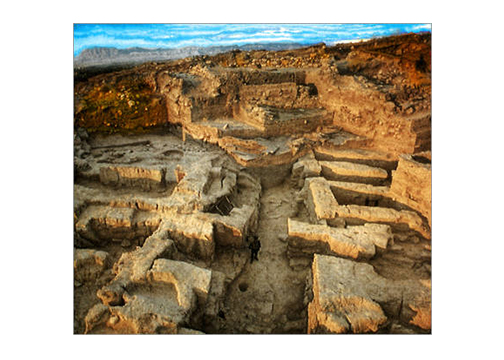


Reasercher Involvved: Davide D'Errico
The Reconstruction of Social Changes though the Exploitation of Plant Resources at Arslantepe (Turkey) from the Late Calcholithic to the Early Bronze Age: a Use Wear Approach.
Ongoing PhD Research at LTFAPA and Leiden University
This research project concerns prehistoric communities of Eastern Anatolia during the Late Chalcolithic. The analyses I undertook on chipped stone industries - typological, technological and functional analysis- has led me to develop a research programme which, up to now, has never been carried out in an systematic manner: the study of lithic industries in relation to the dynamics of social-economic changes of Eastern Anatolia communities during the IV and III millennium BC. This research project, which I am developing at the Faculty of Archaeology of Leiden University in collaboration with La Sapienza University of Rome, has its main focus on the site of Arslantepe (“The hill of the lions”) located in Eastern Anatolia (Turkey), 15 km from Euphrates and 6 km from the modern city of Malatya. Thanks to its long chronological sequence, from the Halaf period (6th millennium BC) to the Roman-Byzantine period and the extensive excavation campaigns, Arslantepe allowed us to investigate the process of economic resources centralization which developed during the IV and III millennium, providing important information on the evolution of the dynamics related to the emergence of the “elite” and the control of productive activities, particularly agriculture. The chronological period examined in my research extends from the end of the 4th millennium B.C. (VIII phase 4250-3900 B.C.) to the early phases of 3rd millennium B.C. (VIB phase 2900-2750 B.C.). During the late Chalcolithic 2 (VIII phase) where there was little evidence of living areas, to the late Chalcolithic 3-4 (VII phase) where archaeological evidence testimonies to the presence of a large ritual building (Temple C) in which redistribution took place, inserted into a larger cultural context, including the northern regions of the upper Tigris and Euphrates and their connecting territories. This is confirmed by the excavation of a multi-functional building of the III millennium (3350-3000 B.C. Phase VI A) in the southwestern part of the mound. This complex public monument (ca. 2000 mq) which is architecturally and functionally divided into diverse sectors, had distinct planned areas for public, religious and secular functions which involved distribution and a complex administrative structure as is evident from the thousands of seals found in various places in the palace complex which is recognized as the first example of “palazzo” in the whole Near East. The two successive phases testimony the destruction of the palace and the construction of quadrangular huts by the nomadic shepherds of eastern Anatolia (VIB1) and the construction of a new village in crude bricks (VIB2).However, I realize the necessity of broadening my research and comparing this site with others in the area. For this reason, I compare Arslantepe with the site of Tell Leilan located in the region of Kabur (Northeast Syria). This comparison is essential to reconstruct, through the study of lithic assemblages, the general dynamics in the process of centralization in the various areas of the Tigris-Euphrates valleys. This expansion to a wider, regional dimension could reveal the social-economic characteristics of the different eastern Anatolian communities and the dynamics involved in the development of the centralization of productive resources. Tell Leilan was active from 5th millennium to 1700 B.C.. In its first phase (5thmillennium- 2600 B.C.) Tell Leilan was a small agricultural center which in the course of 200 years became one of the largest Syrian sites with Tell Brak and Tell Mozan. This rapid growth is linked to a broader regional process involving the economic dynamics of the area. In the Habur plain, between 2900 and 2700 B.C., there was a process that leads from a simple village economy to an urban centralized economy linked to an increase in agricultural production, which allowed the development and the growth of these sites.Until now research regarding the process of centralization has been limited almost exclusively to the analysis of ceramic material, of the administrative system and architecture. Ceramic analysis provides abundant data (types, techniques and functions) regarding Arslantepe and, in general, the Syro-Anatolic region, which reveals that a dramatic productive change took place in the ceramic production in favour of the slow-wheel, quick-baked, mass produced bowls impressed with the stamp of the maker. Possible technological and functional changes linked to the increasing control of productive and manufacturing activities have been hypothesised even for the lithic industry. This change of prospective is the object of my research. Despite the fact that the lithic industry has often been considered “mute”, it could, instead, give us new and important data on productive systems and on craft specialization through the application of modern methods of analysis which go beyond the canonical typological analysis. The study of flint and obsidian objects has never been implemented to characterise, in a detailed and precise manner, the effects of such a complex phenomenon as production centralization on the technological and functional characteristics of lithic artefacts.



Reasercher Involved: Vanessa Forte
Technology and Function in the Copper Age Pottery Production of the Rome Area: case studies, issues and research potentials.
Completed PhD Research at LTFAPA
This research focuses on the domestic pottery production related to the Chalcolithic settlements of Tor Pagnotta, Casetta Mistici, Osteria del Curato-Via Cinquefrondi, Torre della Chiesaccia and Valle dei Morti. All of the analysed contexts are located South of Rome and are chronologically dated between the half of the IV and the end of the III millennium B.C.The settlements analysed in this research play a major role in the understanding of the occupation of this area, such densely populated during the prehistoric period and geographically limited between the Tiber river, the Aniene river and the Colli Albani volcano.This study aims to reconstruct the technological and functional choices involved in the pottery production in order to define and highlight patterns of continuity or discontinuity, which are useful to investigate the occupation dynamics of the area.The localization of the settlements (very near one to each other) allows to develop the research both over a synchronic and a diachronic perspective, identifying differences and similarities between contemporary productions and in a diachronic perspective, underlying transformations happening over time within different cultural traditions. This research falls into a moment where studies focused on the function of prehistoric productions are mostly related to tools made of other types of materials (e.g flint, hard animal materials etc) than pottery, which has rarely been taken in consideration from this point of view. So far, the few use wear analyses performed on pottery, focused on the reconstruction of the vessels’ use, not taking into consideration its technology, intended as production techniques, not allowing the development of a universal terminology or a specific methodological approach. For these reasons this research proposes a methodological framework comprising an integrated approach of wear analysis and experimentation, which allowed to produce relevant data on this matter.The methodology here presented allows a detailed examination of a pottery production based upon the decomposition of the vessel. Starting with the compositional analysis of clay pastes (petrographic analysis on thin sections, XRF) it was possible to reconstruct the sourcing strategies, locate the clay sources exploited in the area and define clay recipes. Furthermore, a detailed analysis of the vessel construction and pottery firing techniques was performed. A major role in this research is played by the analysis of the samples under a microscope, applying a low power approach, and by a dedicated experimental framework that allowed to study and define the modeling techniques, surface treatments, decorations techniques, along with the exploited tools, in order to reconstruct the involved gestures, which are only hypothesised trough the study of traditional contexts. Trough this approach it is possible to take the whole aspects of a pottery production such as the choices that distinguish individual traditions and the manufacturing features allowing to define the figure of “the potter” or his role in a prehistoric community highlighting possible forms of craft specialization.Moreover, from the application of this methodology it emerged that it is not possible separate the study of technological choices from the use, as every vessel is produced to be used. For this reason technological features, as modeling and surface treatments and the choice of clay pastes are studied in relation to the functional requirements, with an integrate approach involving microscope observations, residue analysis and experimentation, focused on the definition of the actual use of a pottery vessel.
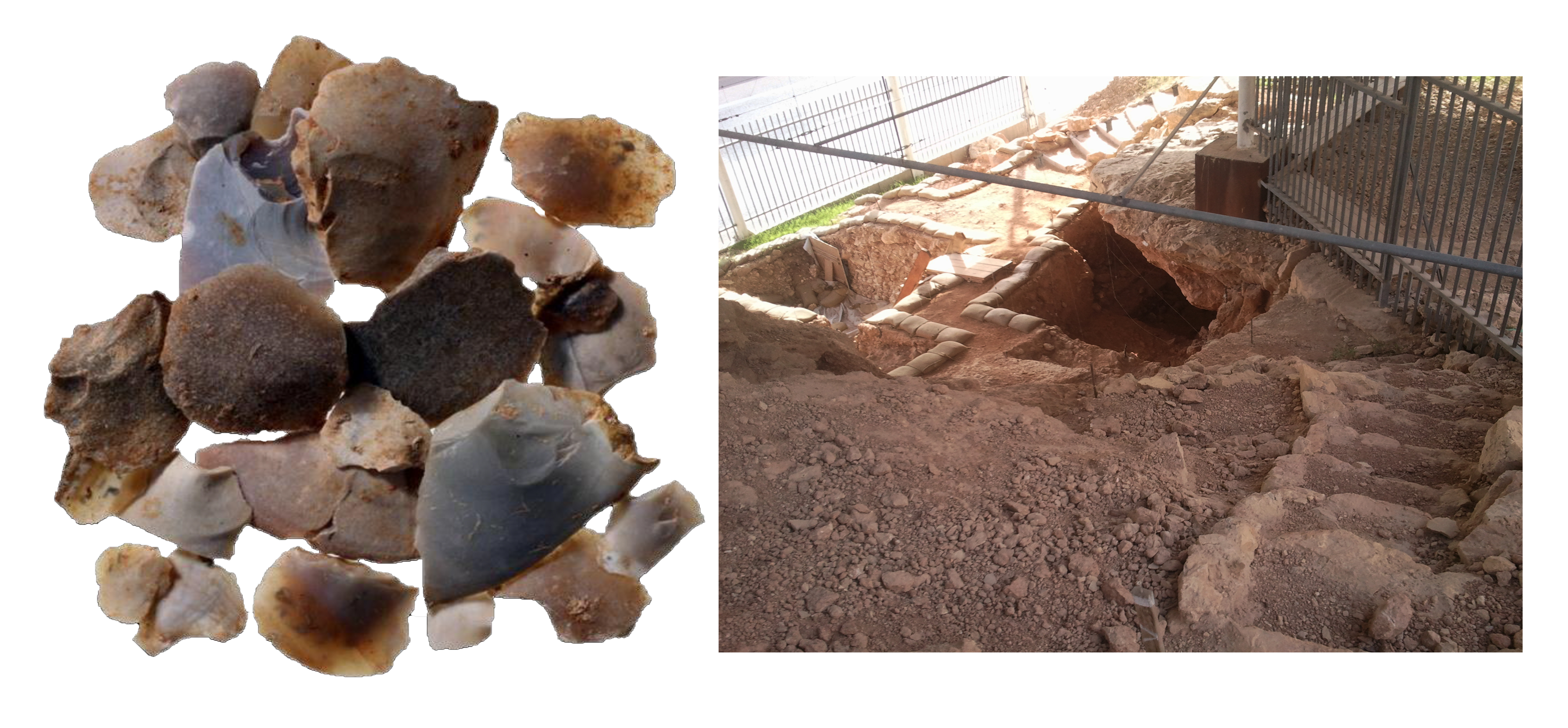


Reasercher Involved: Flavia Venditti
The Recycling Phenomenon during the Lower Palaeolithic: The case study of Qesem Cave (Israel)
Ongoing PhD Research at LTFAPA
The habit of recycling something that is no longer useful, with the aim of producing a new object, is not only a modern phenomenon, but its roots can be found in prehistoric communities as well. Ethnographic studies suggest that recycling is a completely integrated practice in lithic strategies, in traditional and pre-industrial societies, that influences waste disposal accumulation and, as a consequence, the archaeological “record”.Due to their indistinct morphological features, it is sometimes difficult to recognize recycling events in archaeological sites. That is the reason why these types of tools have received little attention from researchers and in the specialistic literature.In this sense, the Qesem Cave site plays a key role in the identification and understanding of this phenomenon.Qesem is a hotbed of ideas about the elaboration of adaptive strategies that will become fully developed in more recent contexts (laminar production, Quina retouch, recycling).Furthermore, its geographical position in the Levant, as a connection between the African and European continents, defines Qesem Cave as a crucial site for understanding dynamic evolutions of hominins.Qesem Cave is located 12 km east of Tel Aviv, at an elevation of 90 m.a.s.l. and it is dated to 420-200ka, with the U/Th method, from speleothems present in the cave.Lithic industries is assigned to the Acheulo-Yabrudian Cultural Complex, present only in the center and south of the Levant between 400 and 200ka. This technological complex is divided into three major industries on the basis of its lithic production:• Acheulo-Yabrudian, characterised by the production of flakes, bifaces and scrapers,• Yabrudian, characterised by the production of flakes and Quina scrapers,• Amudian, characterised by production of blades and a component of “Upper Paleolithic” tool.In this scenario, the inclination to recycle old artefacts to use as cores for the production of new blanks is recognisable in all archaeological layers. Within them, four categories of artifacts produced from big flakes, collected within or outside the cave, have been identified and described; in this last case flakes present patinas related to surface material. These flakes, called core-on-flakes/flaked flakes (COF-FF) were used as a core for the production of new blanks, mostly from the ventral face, with or without platform preparation. Four categories of recycling tools are recognised produced from the ventral face of cores-on-flakes/flaked flakes: Double Bulb Double Ventral Face “Kombewa”, Double Bulb Double Ventral face “non Kombewa”, Regular Double Ventral Face, Lateral Double Ventral Face.The aim of this project is to analyse and determine the function of these recycling tools, using use-wear analysis through a low and high power approach, SEM and EDX measurements.The main objective of this research is to determine the function of the Qesem Cave recycling tools including:a) an investigation of use wear features and patterns. This will include both traces developed by the worked materials and wear associated to possible hafting and gripping. This will be possible through a creation of a wide experimental reference collection,b) a functional analysis of items found at Qesem Cave from both Yabrudian and Amudian layers, in order to underline some possible differences or similarities between the two assemblages,c) a function-spatial analysis of items selected from 3 different areas of the site in order to identify different areas with different purposes,d) a chemical analysis through FTIR measure of a sample of the whole categories, in order to search organic or inorganic residue attached to the flint surface. Reconstructing the life history of recycling tools is very important because it enables researchers to understand cognitive, technological and strategic features of the hominins who preceded us during human evolution. Moreover, it can provide important data regarding the exploitation of, and accessibility to, raw materials, and the limits, strategies and intensity of lithic exploitation.

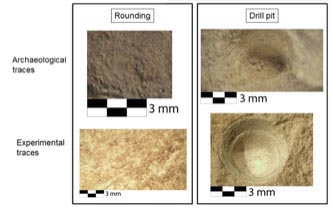

Researcher Involved: Stefano Caruso
Stonework in the Neolithic Maltese Megalithic contexts: Technology, Function and Culture
Ongoing PhD Research at LTFAPA
The fundamental research aims of this project regard technical aspects of limestone artefact production, such as portable art, parietal art and architectural elements, and involve the replication, via experimental archaeology methods, of working techniques and tools employed in their manufacture; in addition, this methodology allows a better understanding of the purpose and use of globigerina limestone objects, however only general functional observations will be made. The other research targets regard a deeper comprehension of cultic and cultural aspects that have an influence on the manufacture and use of limestone artefacts, and the identification of possible differences in the technological choices of the Maltese Neolithic communities.Given the objectives of this work, the research is based on the non-destructive and non-invasive analysis of archaeological finds, consisting of limestone artefacts of all dimensions found in the megalithic structures, on the development of experimental replicas of such artefacts, and on the comparison between the results of these two approaches. In order to broaden and deepen this study, other disciplines will be integrated which are closely connected to experimental archaeology, such as ethnography, ethnoarchaeology and ethnohistory. Techno-functional aspects will be investigated with the help of tribology and geology. The combination of these different disciplines should lead to the formulation of hypotheses regarding stone working, the gestures, the behavioural patterns, and the social and cultural aspects linked to the sanctuaries and their associated objects.All megalithic sanctuaries located on the two Maltese islands were built with local material resources, which consist of two main geological formations: globigerina limestone and coraline limestone. These materials are found on both islands, Malta and Gozo, with the globigerina limestone covering a large part of the total area, and the coral limestone occurring in minor amounts; however very little is known about prehistoric quarrying methods and the location of prehistoric caves. Large quantities of tools, objects, and especially of portable art were made out of globigerina limestone, as the hardness and lack of elasticity of coral limestone limited its use for such productions, although there is evidence of the use of this stone for the manufacture of some tools. However, knowledge regarding technological choices related to the processing of these stones is still insufficient to understand production methodologies. The selection of stone-carving tools was limited due to the lack of availability of a variety of raw materials. Flint, obsidian and hard stones are not present on the island, but tools made of these raw materials have been found, which would suggest their importation, whereas there is no indication regarding the importation of metals; however, technological and use-wear analyses should shed some light on this issue.The lack of alternative resources highlights the archaeological dilemma regarding production methods of limestone objects. Although the density and hardness of the Maltese limestones – especially globigerina limestone - are relatively low, their working and processing is not easy and, considering the variety and degree of finishing of the limestone artefacts, the skills and tools required to manufacture them needed both a great deal of energy and/or manpower and a certain degree of specialisation.The principal methodologies employed in this study belong to the experimental archaeology, technological and functional analysis spheres, including microscopic analysis of limestone artefacts, creation of replicas of such objects, and technological, morphological and functional analyses of the experimental replicas. A thorough bibliographical research, identification and documentation of a range of limestone objects are also essential to a satisfactory outcome of this study.As stated above, the research is based on archaeological data analysis as well as on the construction and development of experimental replicas of such artefacts, and the comparison between the results of these two approaches. Experimental archaeology methods are instrumental in dealing with questions related to artefact technology and function, as they involve the establishment of repeatable and verifiable protocols employed for their reproduction. These analyses will lead to the creation of hypotheses regarding stone working, gestures, behavioural patterns, and social and cultural aspects linked to the sanctuaries and their associated objects.
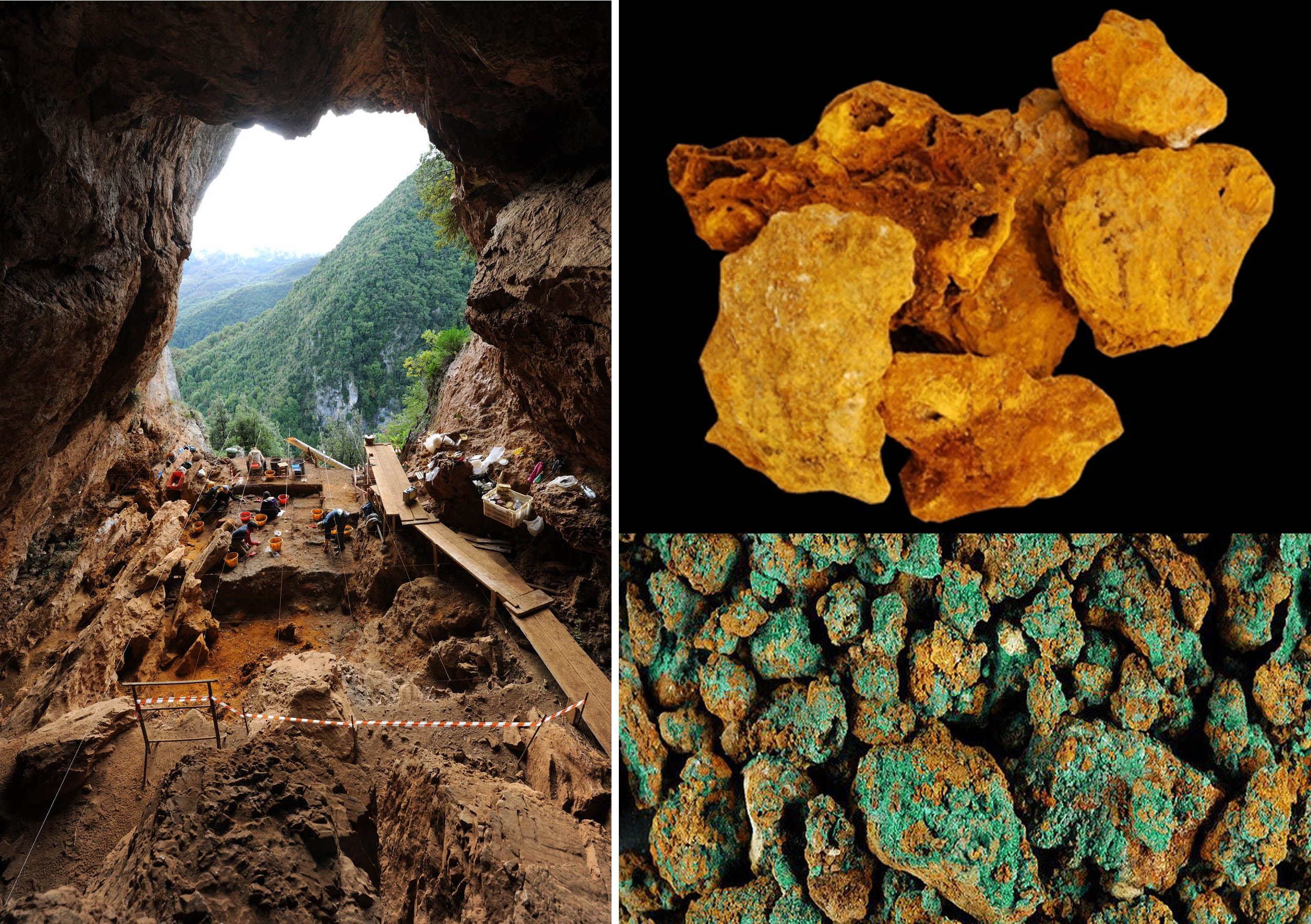
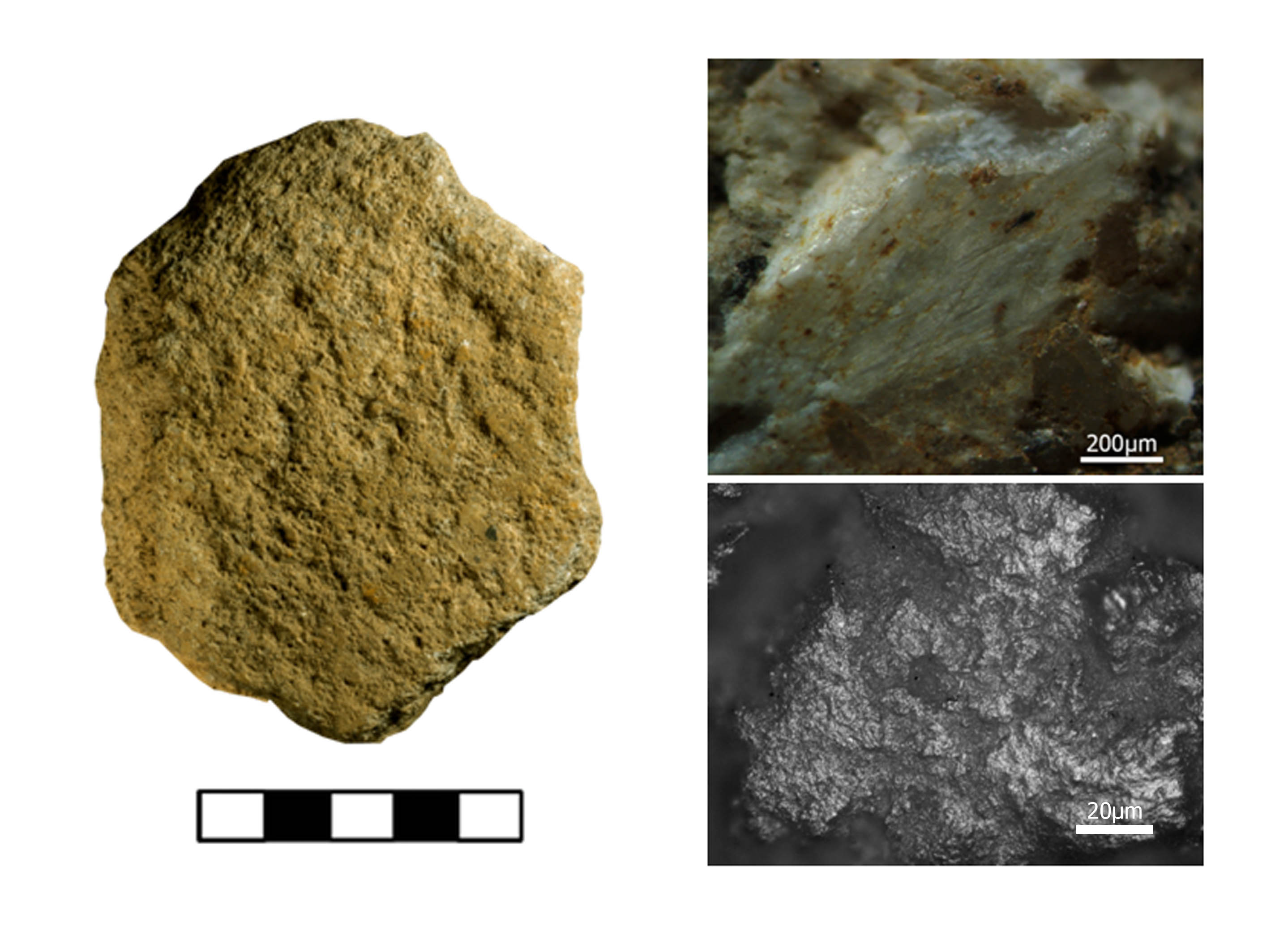
Researcher Involved: Isabella Caricola
The Function of Macrolithic Tools and the Exploitation of Mineral Resources in the Western Mediterranean in Recent Prehistory
Ongoing PhD Research at LTFAPA in joint research with Paris1 Panthéon Sorbonne, France
During the late Neolithic and the beginning of the Eneolithic, mining and minerals processing has evolved with the social, cultural and economic aspects of the communities, as testified by the exploitation of iron ore (goethite and hematite) and copper mineral deposits. This evolution lead to the development of specific techniques and methods of use of stone tools along with ideological factors that lead to their circulation and diffusion. This research focuses on the investigation of macrolithic tools used to modify and transform the minerals, performing a technological analysis, use-wear analysis and raw materials examination. These factors are essential to reconstruct the organization of production and the chaine operatoire in old mining contexts of the Western Mediterranean.The contexts subject of this research are: Grotta della Monaca (Calabria-Italy), Grotta del Tesauro (Calabria-Italy), the collection stored at the Luigi Pigorini Museum of Rome (Italy) and the Cabrieres mine in France.The tools analyzed are grinders, handstones, pestles, abrading stones, slab and hammerstones used in the whole chaine operatoire from the extraction to primary processing of minerals as iron and copper. Applying both Low and High Power approach it is possible to define the specific use of these objects within the analysed contexts.This type of analysis is strictly related to an in depth experimental framework, carried out following a dedicated experimental protocol designed specifically for each of the sites taken into consideration. Petrographic analyses conducted on the archaeological record, are essential to identify the exact raw materials to be exploited during the experiments. Indeed, the analysis of raw materials, allows to analyse in detail the technical features of the stones that were selected by the prehistoric groups.The interest that man has shown towards the mineral is known since the Palaeolithic, and this led, in time, to a specialization in the exploitation of resources that actively engaged the communities involved. In particular, the oxides and the hydroxides of iron ore are minerals that can have different uses: they can be exploited as pigments, abrasives substance and for the creation of bellows; they have waterproofing and drying features. This explains the importance of these mineralisation, useful in everyday life, which provide them an important meaning within the communities. Nowadays, some populations use the same pigments for the intrinsic characteristics listed above and testifying the important role of extractive sources.The dynamics that lie behind the search of minerals are complex and can provide important data on ancient prehistoric communities. Even copper minerals, including malachite and azurite, were used not only in metallurgical purposes. Indeed, in the literature is known their use as pigments and, in some cases, as therapeutic substances.Technology, but also gestures and function involved in the production of the lithic objects can be considered as the result of an evident cultural heritage.This project focuses on the development of micro-traces, especially polishes, shiny areas visible on the stone tools, which are able to provide detailed information about the contact with a certain substance. Through the analysis of micro-polish it is possible to achieve very detailed evidence related to the processing of mineral substances. These results are possible also thanks to the important role played in this research by experimental archaeology. Indeed, as in the case of Grotta della Monaca, the experimental extractive test of different minerals along with their processing allowed to understand how these latter can influence the formation of the use-wear.The analysis of use wear, technology of macrolithic tools, and a dedicated experimental framework part of this research allow to obtain innovative and detailed evidence related to the behaviours of the prehistoric communities living in an important timeframe associated to the transition between the Neolithic and the Eneolithic.
Dissertations
Analysis of plant micro-residues sampled and extracted from grindstones of Southern Italy Neolithic contexts: Experimental Archaeology and Paleobotany, an integrated approach.
MA Thesis by Rachele Rampazzo
In Archaeology residue analysis involves the detection, characterisation and interpretation of foreign materials, organics and inorganics, that can be found on the surface of archaeological evidences or in their costitutive matrix. The residue analysis entails different investigation methodologies (Microscopic Analysis, Spectrophotometric Methods (FTIR, Micro-ATR-FTIR), UV Luminescence, Histological Staining, Biochemical Tests, Absorbance Spectroscopy, Enzymatic Testing, Gas Chromatography coupled Mass Spectroscopy (GC-MS), DNA and Amino Acid Sequencing, Immunological Testing) to understand the function of archaeological tools. Although there are many studies and specific investigations for almost every category of archaeological residue (organic and inorganic), systematic researches haven’t been conducted that had considered a strict integration among Experimental Archaeology, archaeological record and Paleobotany. Up to now atlases or complete specialized texts relating to the use of plants in Prehistory haven’t been published, but only articles or cases of study focused to analysis of plant residues found in archaeological sites. The choice of the macro-lithic artefact, experimental and archaeological, on which I sampled the residues was focused on the grindstones: multifunctional and versatile tools made of one or more used surfaces to work, crush and transform the vegetable, animal and mineral materials.Why grindstones? Grindstones’ intrinsic characteristics lead to believe that they could be widely used for the plants treatment while their textural and mineralogic characteristics make them apt to collect and store the working plants’material, as well as becoming the site of different assembly. Only a few researchers have recently turned to this class of archaeological material linked to residues analysis. Morphological description and typological classification aren’t enough to understand the grindstones’ function. We can draw more functional information through an integrated study system which also contains use-wear and residues analysis. Therefore the aims of this research were: 1. To begin a more detailed and wider research of Mediterranean plant species suitable for the anthropic use on the grindstone, studing them at the macroscopic and microscopic level according to a systematic and experimental methodology.2. Being able to develop a methodology for the study of plant micro-residues sampled and extracted from sediment collected from archaeological grindstones’ surfaces.3. To understand which types of plant micro-residues (organic and inorganic) could maintain a recognizable preservation in the archaeological record, despite of pressure and mechanical stress caused by time and taphonomic factor.To achieve those goals three essential steps are needed. During the first step: 40 plant taxa were selected according to the anthropic use on the grindstone (phytotherapeutic use, edible use, painting/dying use and textile use). After harvested (according to its natural phenological time) useful parts of selected plants, the realization of the First Reference Collection began by sectioning or peeling them manually. The aims of this first reference collection were: to examine their histologic structure, to identify tissutal characteristics, the presence of possible cellular inclusions, storage materials and their morphobiometric characteristics. During the second step of this research the same taxa have been subjected to the experimental work to obtain the Second Reference Collection. The aims of the microscope observation by transmitted light of slides so obtained were: to recognise and record the morphobiometric changes done by the vegetable material, to understand which typologys of micro-residues keep characteristics of recognizability such to connect them to the organ or to the plant of origin; to analyse which parameters (colour, size, shape, lamellae, hilum, etc.) make them more recognizable.The third stage of my research has consedered: 1. The samples of the sediment: the sediment was sampled from Neolithic grind slabs coming from three sites in Puglia (an Italian Region in the South East): Palestra ex GIL, Masseria Pantano and Passo di Corvo.2. The application of the Laboratory Protocol at the sampled sediment: this protocol was defined “pluralistic-simultaneous” and it is able to extract more typologys of the plant micro-residues (starches, phytoliths, microcharcoals, crystals of calcium oxalate, fragments of xilema, epidermis, cuticle and so on) from the sediment.3. The analysis of archaeological residue obtained and the interpretation of the data. The residue analysis of the upper working surface of the selected archaeological samples (1, 4 and 7) revealed the presence of starches and phytoliths that can be associated to kernels coated belonging to Triticum and/or Hordeum genus and, only in a case, associated to legumes’ working. On the other hand the residues analysis of the bottom side, that revealed the presence of microcharcoals, permitted me to suppose that some of the samples selected were placed near the fireplaces or over the surfaces designated for domestic or craft activities.According to the results it’s possible to assert the value and the application of this methodology and this Lab. Protocol to grindstones or working surfaces dating back to different chronological horizons (historical and pre-historical). To bring to light and identify archaeological plants micro-evidences, left in situ despite of the centuries events, can help us: to detect the exploitation of vegetable resurces, to recognize harvested and treated plants by our ancestors, to understand better the function of this class of archaeological materials. Their possible presence and correct detectability could bring to light within also the gestures, actions and postures, les chaînes operatoires chosen, the men or more commonly women were able to obtain food supply and dying pigments, phytoremedies, textiles... recreating a deep and often everlasting bond between man and the vegetable world.
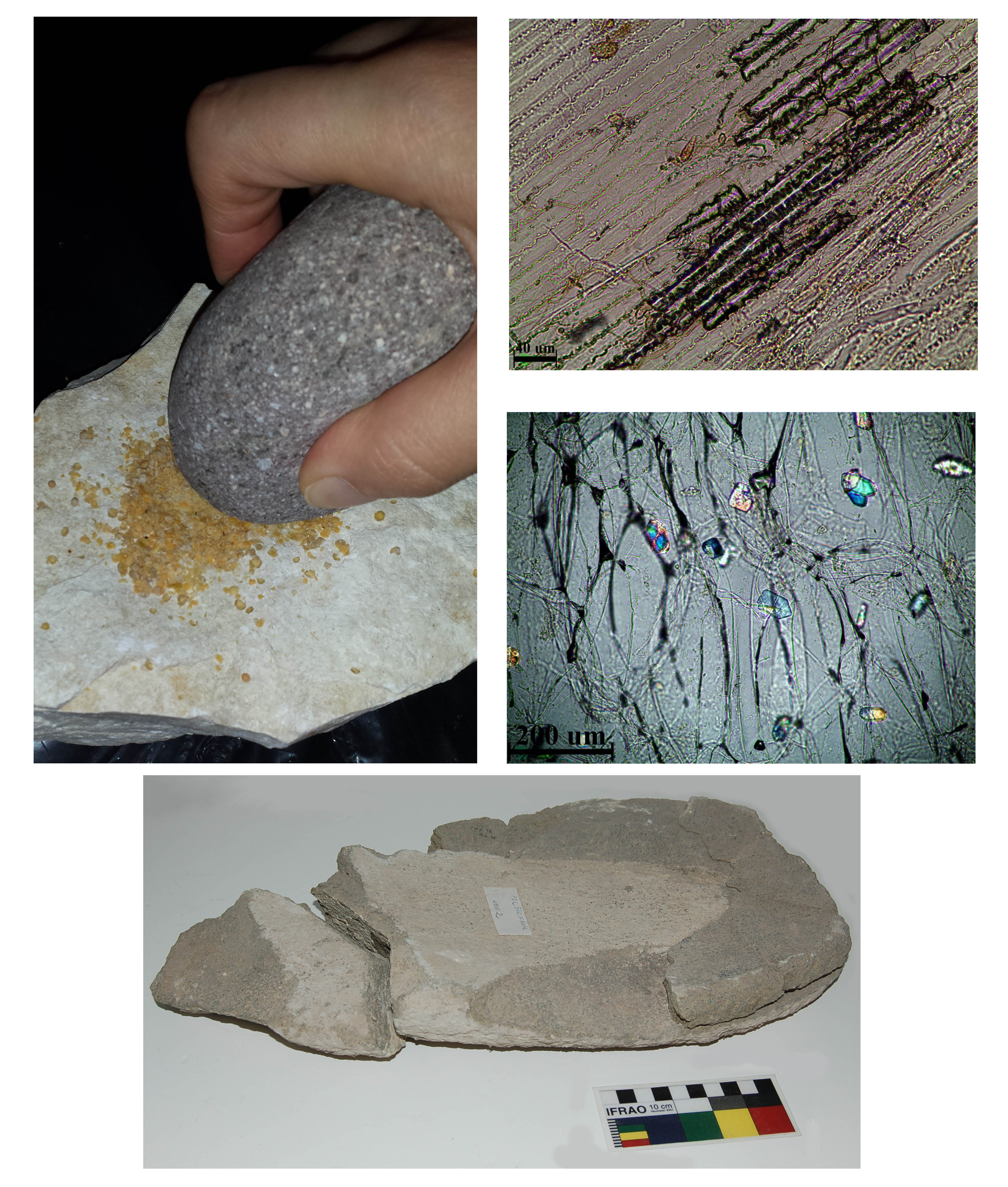
Functional analysis of quartz artifacts. Creation of a reference collection. Use wear analysis of a quartz lithic industry in the Paleolithic site of Coudoulous (Quercy, France).
MA Thesis by Flavia Venditti
The site of Coudoulous I (Lot) is one of the most important late Middle Pleistocene sequences in Southwestern France. Since a preliminary publication, several multidisciplinary studies have been conducted, which greatly completed our knowledge about Preneandertal populations in this middle hilly region (Quercy). Interdisciplinary objectives, based on geochronology, paleoecology and archaeology, seek to precise the socio-economic status of the hominid occupations.The site is defined as a sinkhole resulting from the gradual collapse of the ceiling roof, allowing occasional or more permanent occupations by carnivores and humans during Middle Pleistocene.Luminescence dating on quartz provided a maximum age of 260 ka for the upper part of unit 8, and allowed correlating units 7 and 4 to MIS 7 and 6, respectively.Faunal spectrum is diversified, with large microvertebrates components and various species ofcarnivores and herbivores. The site is then interpreted as a natural ungulate trap with marginal scavenging.The main archaeological unit is the layer 4 dominated by bison’s steppe bones and quartz (96%) artifacts. They show three technological reduction strategies: Discoid, bipolar-ph-anvil flaking, Levallois (only on flint).The use wear analysis was developed on a sample on 30 quartz artifacts. The results confirmed that 80% of the active edges were used for butchery activities. The bison carcasses were processed in situ mostly with un-retouched quartz flakes.This use wear study has also contributed to the reconstruction of the technological choices implemented at the site. Groups of Neandertal came to the site to hunt and kill young bison. At the same time, near the site, they collected the lithic raw materials, in order to knap the tools kit for processing the carcasses. They favoured the production of pointed flakes with un-retouched edges that were useful to achieve tasks such as the disarticulation/cutting of animal portion and production/maintenance of wood spears.Moreover, the use wear analysis has highlighted the multi-purpose aspects of these tools regarding the utilisation of different used edges and tool’s morphologies to perform different activities. In fact, the production of pointed flakes was not exclusively addressed to the hunt strategies, but also to the animal processing. The paucity of retouched tools testifies a disinterest toward the modification of the edge morphology that was immediately efficient after the knapping procedure. As a consequence, procedures of maintenance of the edges were not considered too, probably because the tools were used for a short time. The abundance of the raw materials nearby the site and the general simple but efficient chaîne opératoire adopted by the Neandertal of Coudoulous have surely favoured this production.Other traces of wood and dry hide were found on a few items.This study was the basis for a creation of a rich experimental reference collection that comprised a wide range of experiments on a different worked material such as bone, antler, wood, hide, meat and vegetal together with experimental trials of huntings strategies and some post-depositional alteration.
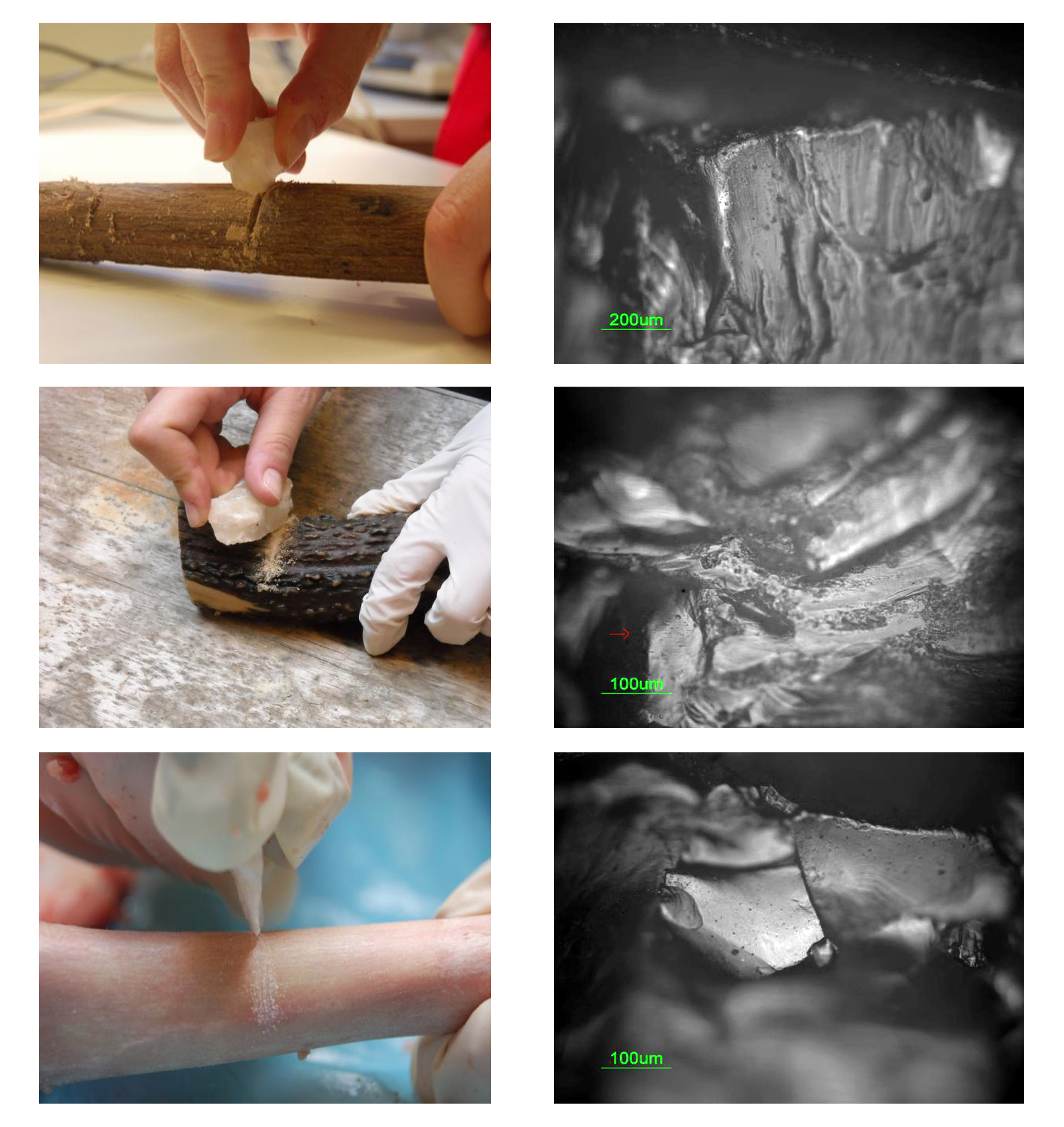

Maria Virginia Montorfani (2015-2016). “Gli Intrecci in Fibra Vegetale nel sito di Abu Tbeirah (Iraq Meridionale, III Millennio a.C.): Approccio Sperimentale”.
Sara Stellacci (2015-2016). “Gi Strumenti in Materia Dura Animale: Sequenze di Produzione e Utilizzo. Approccio Tecno-Funzionale, Tafonomico e Sperimentale allo studio di alcuni Contesti Neolitici del Tavoliere e del Conero”.
Sergio Taranto (2015-2016). “Huskin Tray: Una Teglio per Cuocere il Pane? Interpetazione di una Tipologia Ceramica dell’Alta Mesopotamia Neolitica attraverso un Approccio Sperimentale”.
Flavia Marinelli (2015-2016). "L’Industria Litica del Paleolitico Inferiore di Fontana Ranuccio (Anagni-FR). Un Approccio Sperimentale di Tracce d’Uso per l’Interpretazione di “Small Tools e Bifacciali”.
Giorgia Fiorentino (2014-2015). "Archeologia Sperimentale e Analisi Tecno-Morfo-Funzionale: un Approccio Integrato per l’interpretazione dei Manufatti Archeologici. Il Caso dell’Industria Litica di Coppa Nevigata (MAnfredonia-FG)".
Alessio Pellegrini (2015-2016). “Studio Sperimentale delle Tracce di Lavorazione Post Fusione di Manufatti in Bronzo: il Ripostiglio di Piediluco (TR), Bronzo Finale.
Manila Colasanti (2014-2015). “Technology and Ornaments: Experimental Study of the Stone Beads coming from the site of Arslantepe (Malatya, Turkey)". BA Thesis
Stefania Doddi (2014-2015). “Weaving Traces at Arslantepe (Malatya, Turkey). Experimental Approach for their Study based on the Analysis of Cretulae’s back”.
Martina Basile (2013-2014). "Artistic Expression as Experimental Research. The Case study of the Parabita Venuses”. MA Thesis
Lorena Russo (2013-2014). “Proposal of an Analysis Method for Bone Remains coming from Lower Paleolithic Contexts: an Integrated Approach between Taphonomy, Use Wear Analysis and Experimental Archaeology” MA Thesis
Serena Fakzetti (2013-2014) "The Functional Meaning of Aterian Lithic Tools (Late Middle Stone Age, North Africa): New Research Prospectives through Experimentation and Use Wear Analysis. The Case study of Jebel Gharbi (North Libya)”. MA Thesis
Antonella De Angelis (2011-2012). "Pounding and Grinding at VI B2 Level of Arslantepe (Malatya, Turkey): Cereal Processing as seen through Experimentation”. BA Thesis
Guest Researchers
Alice Vinet
Alice Vinet started her PhD in 2015 at the Paris 1 – Panthéon Sorbonne University in Paris. Her research focuses on the key issues of the Early Chalcolithic societies from Central Anatolia. Around 6000 BC, which correspond to the end of the Neolithic and the beginning of the Chalcolithic, important socio-economic changes took place in numerous of communities of Central Anatolia. While facing a population increase and new regional relationships, resulting from a millennium of sedentarism in western Anatolia, the villagers settled in new territories on the Anatolian plateau. Her project aims to study the cultural and economic interactions between two essential areas of the Anatolian Plateau: the Konya plain and Cappadocia. To document these interactions, she chose two contemporary sites: Çatalhöyük and Tepeçik Çiftlik. She is focusing on the obsidian industry, through a techno-functional approach. By comparing two lithic collections, she is addressing the socio-economic and cultural similarities and differences at a supra-regional scale.
https://www.researchgate.net/profile/Alice_Vinet
https://univ-paris1.academia.edu/AVinet
http://www.trajectoires.cnrs.fr/spip.php?article147
http://www.cepam.cnrs.fr/spip.php?article2444
Email
ltfapa@uniroma1.it
Address
Museo delle Origini
Università Sapienza di Roma
Piazzale Aldo Moro,5
00136
Italy
Phone
(0039)0649913924